American Shelter Dogs: A Writer’s Journey to Discover Her Rescue’s Origins in Dogland. A Giveaway!
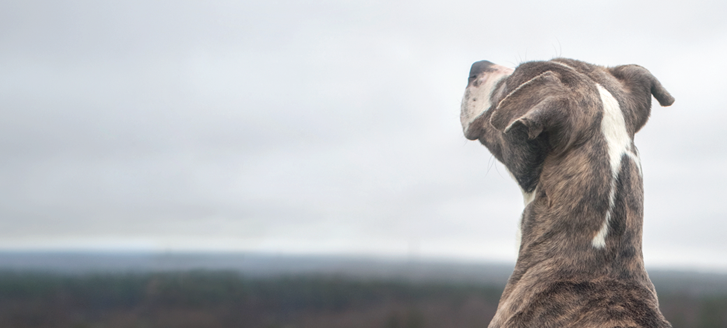
Did you ever wonder where your pup came from? Former CNN producer and Dogland author, Jacki Skole, did. Her rescue, Galen, sparked a desire to revisit her journalistic past and she set out on a journey to discover Galen’s roots. What Jacki didn’t expect was what she’d learn about the shelter system in America, about the South and its complex relationship with its dogs. Dogland: A Journey to the Heart of America’s Dog Problem explores the serious issues facing American shelter dogs and the heroes advocating for them. It’s a page-turner and this is a giveaway! Read on to learn more about the book and how to enter.
Gryffin, Galen & the inspiration behind Dogland
Jacki and her husband, Kevin, were dog parents to their much-loved retriever-chow mix, Gryffin, for seven years before he suddenly died. He’d had a previously undiagnosed tumor that’d ruptured. They, as well as their two girls, Lindsey and Dhani, were devastated. “Griffin was my son, my teacher, and my protector,” Skole described. “As my first child, he brought out maternal instincts I didn’t even know I had, and he prepared me to be a mother to my two daughters.”

Gryffin
Before long, the need to fill the hole left by Gryffin’s passing resulted in adopting a beautiful Australian Shepherd-Labrador Retriever mix they named Galen. But, where Gryffin protected, Galen was fearful. Where Gryffin was independent, Galen was needy. Her many idiosyncrasies led Jacki on this quest. Did Galen’s origins help create who she is?
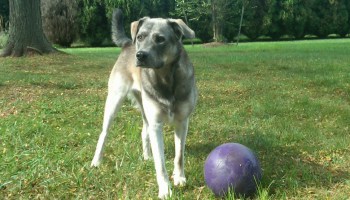
Galen, who inspired the book
This is a really interesting question a lot of us, especially with rescues, may have. I regularly think about what life was like for Jasper, our terrier terror, with his previous family, who surrendered him to a high kill shelter in New York City. Albie and Ani, our Chihuahua rescues, came from a puppy mill. I’ve seen the horrible pictures and videos. Was this their lives, too? You just don’t know, but Dogland has sparked in me that same desire Jacki felt, and I am considering looking into their histories.
Jacki looked deeper when examining the catalysts for her decision.”But there was something about Galen, something I saw every time I looked into her big brown eyes and at her sweet gray face, that seemed to be telling me not to leave it at guesses,” Skole shared in the book. “If I’m honest with myself, I saw something else when I looked into her eyes – I saw a woman who had traded career for family, journalism for motherhood and who, while not regretting a single decision, still struggled with her identity.”
And so, the journey began…
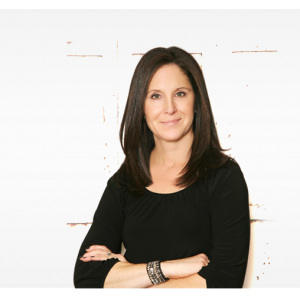
Author Jacki Skole
The shelter dilemma in America
While Skole’s research led her to several shelters in the South and the Northeast, in her native New Jersey, her findings apply to shelters all over this country. The system is broken, with older shelters, especially, required to do an unintended job they’re ill equipped to do. Years ago, a shelter’s main purpose was to get unwanted strays off the streets for public healthy and safety. Today, we want our shelters to house and care for the animals and spearhead their adoptions. Municipal shelters are generally underfunded, understaffed and often housed in cramped quarters, making it a big challenge to perform these duties in a way that provides the animals with a decent quality of life, rather than promotes maintaining high euthanasia rates. Four million abandoned and unwanted dogs and cats are killed each year in shelters, the leading cause of canine and feline death in this country. It has been reported by animal welfare groups that 90% of them are healthy, very adoptable animals, who could make great pets. Some believe that euth number doesn’t reflect them all; that it’s higher. How, then, did Galen escape that fate?
She knew Galen came from a shelter in North Carolina, transported to New Jersey in what’s been called “The Underground Railroad,” a network of animal rescuers who drive thousands of dogs from Southern states, often where adoption rates have fallen and the dogs are almost sure to be euthanized, to the Northeast, where forever homes or no kill shelters await them. Jacki focused her efforts in Gaston County, North Carolina and its municipal high kill shelter, where she’d learned Galen and her siblings (a litter of seven puppies) were surrendered at eight weeks old back in 2010.
“Touring the shelter, I find that ‘depressing’ is not quite a strong enough word, especially once I enter the main canine kennel,” Skole reported on her first visit to Gaston. “I’m hit first by the smell, a putrid melding of wet dog, feces, and urine, which I suppose makes sense as the dogs relieve themselves in their runs, which then get hosed down, inevitably getting the dogs, as well as the run, wet. I find myself holding my breath. In several of the runs the dogs sit or stand just inches from their own excrement. I don’t see anyone making a move to clean it up, and leaving it no doubt makes the already foul smell fouler.”
How cultural differences influence a dog’s fate
Skole’s brave trek to rural Gaston and other high kill and no kill shelters in the South, her interviews with the activists fighting to change things for the better for dogs, and her visits to backwoods residents she thought might have a connection to Galen’s roots, takes the reader on a fascinating adventure, filled with colorful, passionate people, many of whom care deeply about animals and share frustrations about the system, the laws or lack of them and the struggle to make life better for companion animals.
The rural South loves its dogs. Jacki quotes best-selling author Clyde Edgerton explaining that when you grow up in the South, you grow up “in the culture of Dog.” A shelter director in North Carolina told Skole, “From generation to generation, we Southerners have always had dogs. We don’t necessarily know why. We don’t necessarily care for the dog. But we just have to have one. There’s a saying: ‘Take my wife, take my kids, take my car, but don’t take my dog.'”
Yet, most Southerners grew up looking at their dog as a piece of property they owned and were free to do with what they wanted. And, the laws across Southern states supported that. Many dog owners in the rural South are poor and lack the resources for and proximity to the kind of care a dog needs, which poses additional challenges.
Ice Frosting, Dogland‘s cover model, was one of the lucky ones. Then a two-year-old male pitbull, Ice spent thirty-one days in the Wake Country, North Carolina, animal shelter before being pulled by a Pennsylvania-based animal rescue. He was photographed two weeks later by incredible photography artist, Shannon Johnstone, for her Landfill Dogs series.
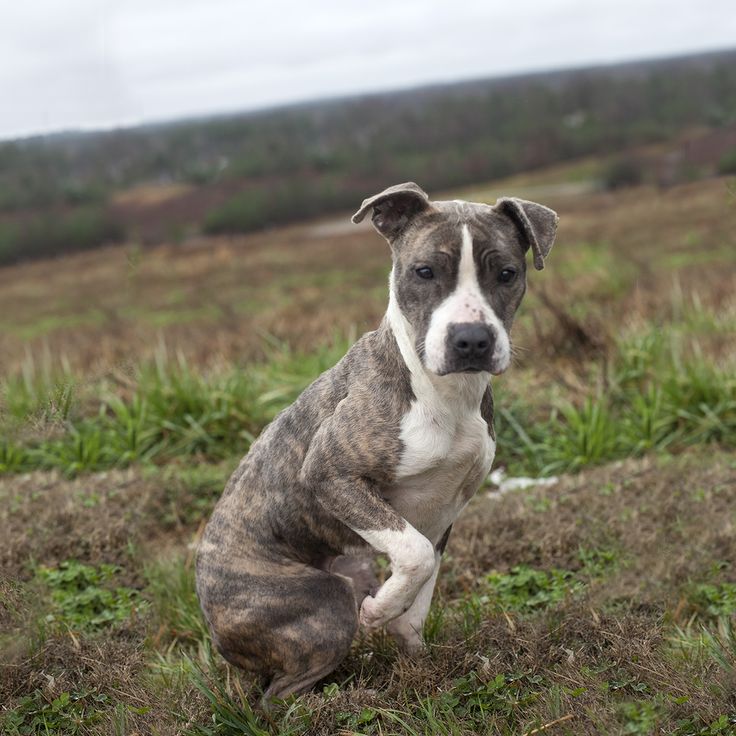
Ice Frosting, the book’s cover dog. Photo credit: Shannon Johnstone
Being from the Northeast like Jacki, I, too, had no idea what has been going on for many years in the South, or of the ever-growing transport system of dogs up North. I learned some transporters are altruistic and provide safe conditions for the dogs they’re transporting and some do not. Some puppies arrive sick or don’t make it at all. But often, things aren’t only what they seem, and Skole does a good job of getting beneath the surface to uncover the complexities of the issues at hand, give us insight into the people all along the chain, and their relationships with the dogs.
In stark contrast to Gaston is St. Hubert’s. It was founded in 1939 by Geraldine Rockefeller Dodge, daughter of William Rockefeller. Passionate about dogs, she devoted four acres of her New Jersey estate, Giralda Farms, to kennels where she bred dogs who went on to compete in top dog shows, winning titles and ribbons. Her dogs, many of whom she brought over from Europe, received superior care. The kennels were palatial and immaculate, as were the dogs, who were given plenty of exercise. After years of breeding, showing, judging in shows, she established a foundation for lost and injured dogs, named St. Hubert’s after the patron saint of dogs and hunters.
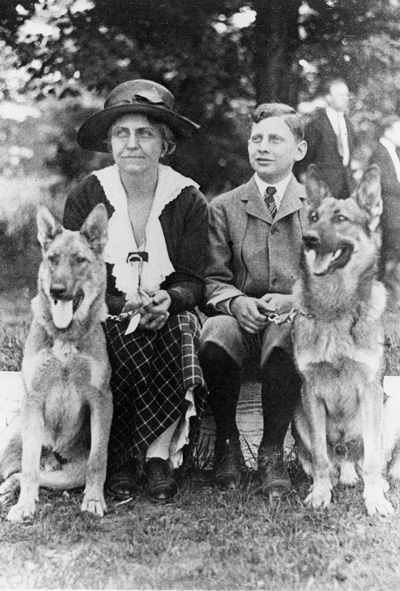
St. Hubert’s Geraldine R. Dodge and her son, Marcellus Hartley, Jr., with two of their German Shepherds, which they’d bring over from Germany.
Today, St Huberts remains on the original sixteen acres of Giralda Farms. But, in addition to acting as a shelter, its also engaged in a wide variety of animal welfare activities, like an on-site dog training school, a day camp program for dogs, and a week-long summer camp for children in grades two through six, that teaches them to value animals and introduces them to the work of the shelter. The dogs are trained and treated differently than at many shelters. A plastic treat cup is secured outside each of the dog’s runs and Skole’s tour guide, Nora Parker, asks each of the dogs to sit before popping a treat in their mouths. “This reinforces what they’re learning [in the dog training],” she says. St. Hubert’s relies on a network of foster families who allow dogs to rotate through their homes when the shelter reaches capacity, so it doesn’t have to euthanize to create space. St. Hubert’s is the optimum example of a very well-run shelter.
As Skole spoke with more and more people, one issue they all agreed upon as playing a major part in reducing euthanasia rates, protecting dogs who are owned and stemming the giant tide of puppies coming out of the South was spay-neuter.
The spay-neuter issue is more complex than you’d think
Have you ever heard of the oops litter? It’s a common term down South, where in many of the poor, rural communities, its common to find more than 90% of dogs unfixed. An oops litter is an unplanned one. A female in heat is chained to a tree in the yard and the neighbor’s male stops by and impregnates her. Her owner neither wants nor can afford the puppies, so they end up at the county shelter where, if they’re lucky, they’re transported up north or adopted locally (a tougher prospect). That’s just one scenario.
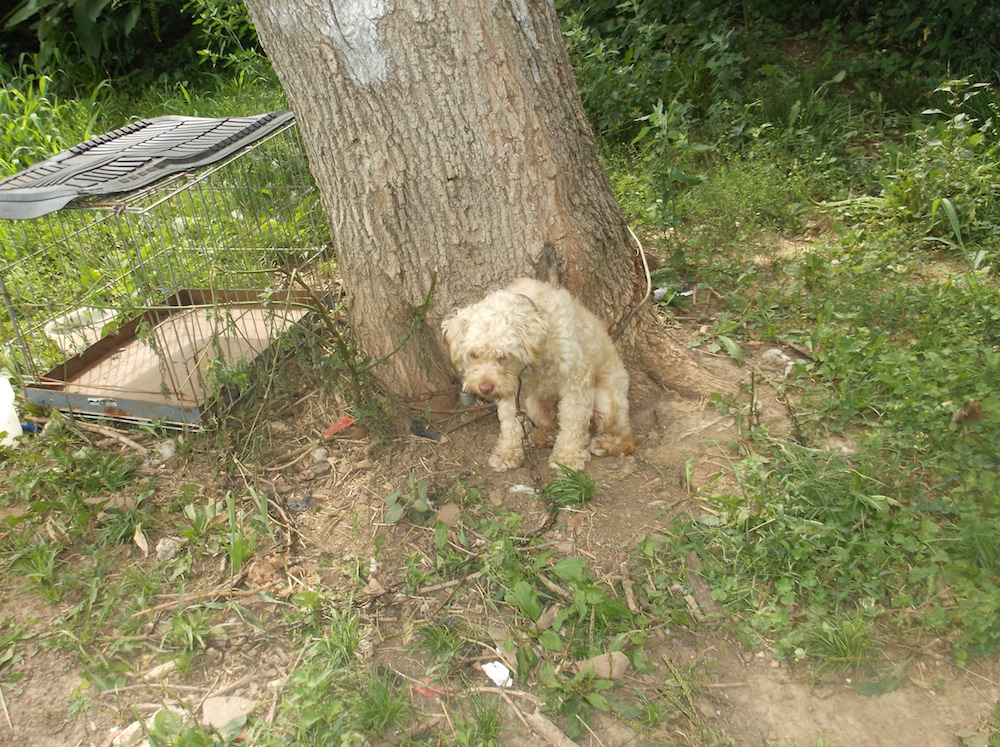
Oops litters, according to many of the Northern and Southern animal rescue workers Jacki interviewed, was in large part the reason for the dog problem. Her research led her to meet real visionaries, who stood up to community pressure, dog owner unwillingness and a real lack of education to create viable low cost spay-neuter clinics all over the South. There are many we get to know through Skole’s journey. One is First Coast No More Homeless Pets, out of Jacksonville, Florida, one of the first in the country to offer a cheaper, easier form of neutering called “zeutering,” where a solution of Zeuteron, containing zinc gluconate and arginine, is injected into a dog’s testicles, rendering it sterile without surgery. This procedure became commercially available in February of 2014.
Another doing great work is Amanda Arrington, the Director and force behind Pets for Life, a Humane Society of the United States-run program. She saw that chaining dogs wasn’t necessarily the choice dog owners would make; they just couldn’t afford to do otherwise. And, many communities around the South and the country, don’t have anti-tethering laws. So, she came up with a great idea. Arrington goes door to door in poor communities around the country where she sees dogs tethered in the yard, and offers them a deal. She will build a fence for their dogs if they would permit her to take them to a vet to be spayed or neutered. And, she will pay for it all. She believes, as Skole writes, “…where people are suffering, their companion animals are suffering.” But, it’s been a long, hard road to build trust in these communities so she can help them help their dogs.
Jacki uncovered many more wonderful people and the organizations they created doing great things for dogs, which you’ll discover in the book. Look for Michael Good and his Homeless Pet Club first established in elementary schools and then in businesses and community groups. And, don’t miss Sue Garcia, who created Paw It Forward, where people donate money so the shelter can adopt out its pets for free.
Meeting Laurie and Daisy
So, did Skole ever find where Galen came from? I can only tell you that at the end of a long road of courage and determination, Jacki met Laurie Baker and Daisy. But, what happened when she drove up to that house on an unpaved road in one of the poorest parts of Gastonia, North Carolina, you’ll have to discover for yourself. It’s touching, insightful and not necessarily what you’d expect.
After much reflection on her journey, Jacki ended her book with this apropos observation: “Looking at my three girls crowded together on the small landing, the humans giggling, the canine shaking, the thunder cracking every minute or so, I couldn’t help but smile. Dhani and Lindsey had each been in her own room, doing her own thing, but they dropped everything to comfort their scared pooch. Watching the scene before me, I thought of a quote I came across while reporting this book: ‘Dogs are not our whole life, but they make our lives whole.’ Amen.”
We couldn’t agree more, Jacki.
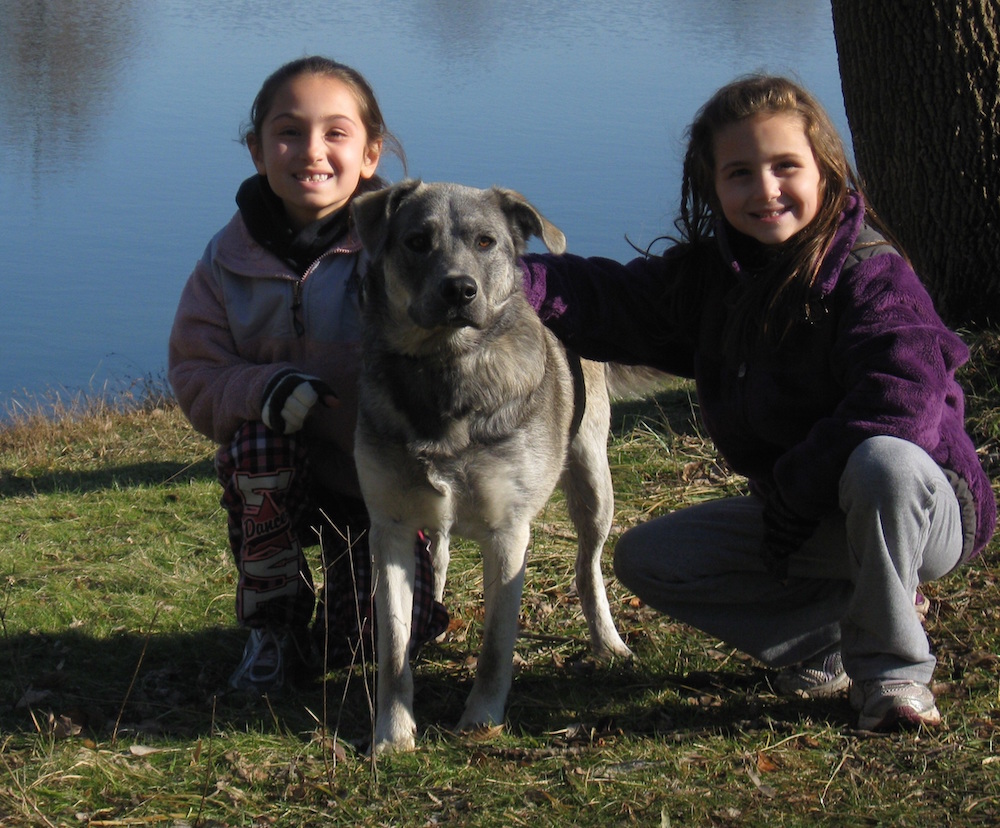
Dhani, Galen & Lindsey – Best Friends
The Giveaway!
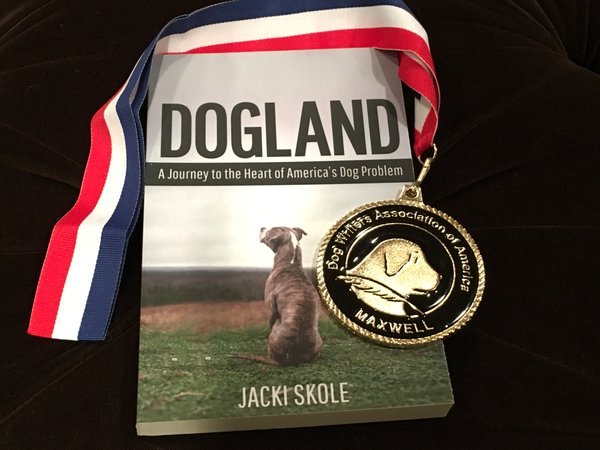
DWAA medal for Best Rescue Book of 2015
Enlightening, heartfelt book; well worth reading, and two lucky Bark & Swagger followers will win an autographed copy!
The giveaway will run from Tuesday, May 31st at 12 noon EST until Monday, June 6th at 11:59pm EST. Two winners will be chosen at random via GiveawayTools.com.
To enter:
- Make sure you’re on our email list; a part of the Bark & Swagger family
- Make sure you’re at least 18 years of age and live in the U.S.
- Follow Bark & Swagger on Facebook
- Follow Bark & Swagger on Instagram
- Follow Jacki Skole on Facebook
- Follow Jacki Skole on Twitter
Good luck!
Dogland was honored with the Dog Writers Association of America award for Best Rescue Book of 2015.
If you purchase, you’re doing a good deed. 100% of the proceeds from Dogland will be donated to the animal welfare programs profiled in the book. Buy it at Amazon, Barnes and Noble and Kobo.
You can also follow Jacki on her blog.
What others had to say about Dogland:
Dogland tackles a complex, emotional topic without chest-thumping and opens readers’ eyes to how we can help these faithful companions.”–Animal Sheltering Magazine
“Those who have given their hearts and homes to shelter dogs will find much here to validate their love, but ultimately the book is meant as a call to action.” –Publisher’s Weekly
“Skole uses her journalism background and her love of animals to shed light on a topic that hits home for just about anyone who has ever brought a dog into their lives…Dogland is a truly compelling book that will have you driving to the nearest shelter to offer a hand or a paw in anyway you can.” —Glassworks Magazine
Did you adopt your dog from the South? Do you know their story? I’d love to hear any you’d like to share!
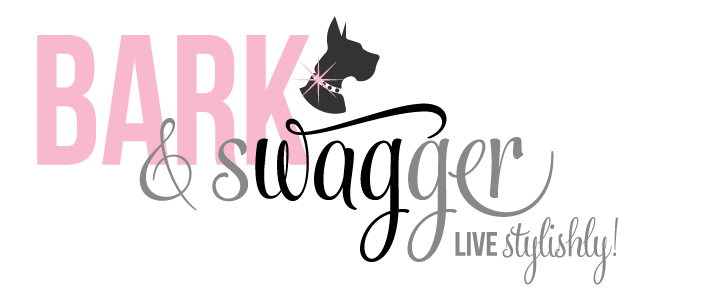


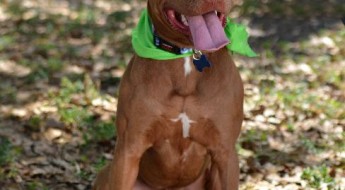

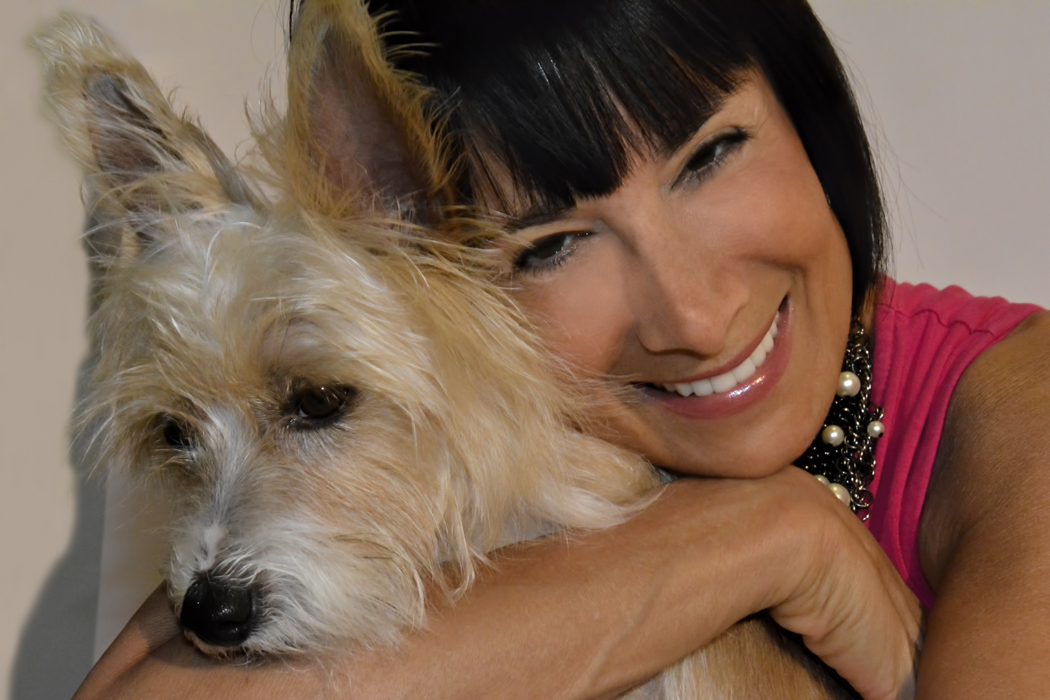

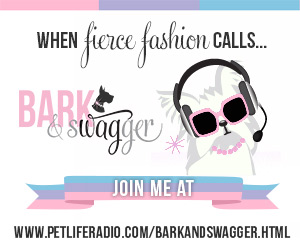
What a great piece. Thanks so much for bring this book to my attention. I’m skipping the giveaway and ordering it right away!
So happy you liked, Aimee, and thrilled you’re buying the book. I think you’ll really enjoy. Let me know how you like it.